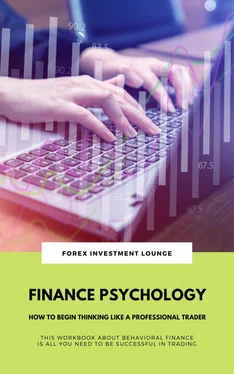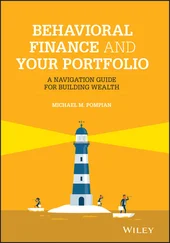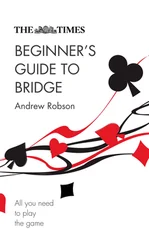Typical thinking and behavioral patterns of Behavioral Finance research are Cognitive dissonance, framing effect, sunk cost effect and heuristics. These are discussed in more detail in the following chapters.
When people make a decision, they put it into a frame of reference and check their assessment for profit or loss. The two Nobel Prize winners Tversky and Kahneman (2000) recognized this and called it the "framing effect".
In simple terms, the framing effect means: "What am I looking at?" Numerous studies have proven that people evaluate the same results differently.
An example: In case A, you tell the subjects they can keep 20 euros. In case B, the test persons are told that they will lose 30 euros. The starting value is 50 euros. The result remains the same as minus 30 euros, but the assessment of the situation in case A is more positive.
Another example: A profit of 10 Euro to 20 Euro (100 percent) is generally felt more strongly by the individual than the profit of 1,000 Euro to 1,010 Euro. In absolute terms, the difference is 10 euros in each case.
In trading, the framing effect means that monetary amounts are not valued realistically. Anyone who earns 50 euros a day with a 50,000 euro account usually has the impression that this is too little. However, if you manage to earn 50 euros each on 200 trading days a year, this results in an annual return of 20 percent!
The lottery game shows that people prefer a sure win of, say, 500 euros, rather than exposing themselves to the risk of winning 1,000 euros with a 50 percent probability or possibly going away empty-handed. This is also one reason why traders find it so difficult to run winnings: They prefer to opt for immediate and safe profit taking rather than taking the chance of even higher profits.
The framing effect is also regularly used in retail. Shopkeepers know that customers prefer to buy a product when they get a discount. If a pair of trousers is reduced from 198 euros to 149 euros, the customer's decision to buy is made easier. The same trousers without a discount would not have been so popular with the customer for 149 euros.
Translated into German, sunk cost means "sunk costs". These are costs that have already been incurred in the past and no longer play a role in the current valuation.
Here is an example: A trader buys shares at a unit price of 100 euros. A short time later the value of the investment is only 75 Euro per share. No one can predict whether these shares will ever reach the entry price again. However, many investors are prepared to reduce the price of the shares in this situation. So they throw good money after a perhaps bad investment and "sink" further money with it.
Exchange participants often base their decision to sell on the purchase price of the investment. However, the purchase price from the past is not important for the development of the future price. Only the investor himself gives significance to the purchase price. If we stick to unsuccessful projects despite better knowledge, we are dealing with the sunk cost effect.
This also includes holding on to stock market values that are already in the red. Instead of selling the assets with a small loss on the account, traders hold on to their positions and hope that the price will recover and the assets will return to their entry price if possible. However, this usually leads to even greater losses, as described above under "Cognitive Dissonance".
A structured trading plan helps to protect yourself from the fatal consequences of the sunk cost effect when trading. Stops should be accepted and positions taken should only be increased in the event of a profit, but never in the event of a loss.
Since the human brain can only process a small amount of information at the same time, it tends to simplify its decision making. These mental shortcuts help people to make quick decisions, but cause irrationality and a myriad of errors. In finance, these behaviours are called "heuristics".
Many investors choose certain investments because they are the focus of general interest. The "Deutsche Aktienindex" (DAX) is present in the media every day. Traders therefore often trade financial instruments that refer to the DAX, although other indices may provide much clearer price patterns. However, its high level of recognition creates the illusion of security among stock market players. They think they know the DAX and are therefore better able to assess its price development. However, sentiment analyses repeatedly prove the exact opposite.
Just because something is better known doesn't mean it has to be better. This is demonstrated time and again by numerous investments in local stocks. Comparable, but unknown companies from abroad can be much more profitable. But here too, the degree of familiarity of the companies creates a feeling of trust and security for the trader. Which is why shares of the own country are always preferred when investing.
The rapid availability of information is another aspect of plant behavior. They lead to distorted perceptions. In most cases, the stock market participant only needs a few indications to buy a certain share. This behaviour is called "rule of thumb decision". The constant attention in the media can lead to the fact that one thinks that a certain share is a must. Titles that are constantly discussed in trade journals or special online portals additionally support this behaviour.
Because of his limited receptivity, a person tends to unconsciously seek information that supports his own opinion. If a position is in loss, a trading beginner will get the impulse to look for good reasons why it will rise again. In this context, the Internet can become a problem. Because the large amount of information leads to finding even more evidence that one is holding one's position, even though many indications have long since spoken in favour of selling.
Another aspect are self-fulfilling prophecies. "Will the crash come in October?" These and similar headlines are featured in the media every year. But just because there have been a few very strong price setbacks this month, it doesn't have to be like this every year. But the constant sprinkling of the keyword "crash month of October" itself can influence events. The constant presence of news on a topic can generate interest among traders and thus lead to corresponding actions that ultimately move the market.
Конец ознакомительного фрагмента.
Текст предоставлен ООО «ЛитРес».
Прочитайте эту книгу целиком, купив полную легальную версию на ЛитРес.
Безопасно оплатить книгу можно банковской картой Visa, MasterCard, Maestro, со счета мобильного телефона, с платежного терминала, в салоне МТС или Связной, через PayPal, WebMoney, Яндекс.Деньги, QIWI Кошелек, бонусными картами или другим удобным Вам способом.










